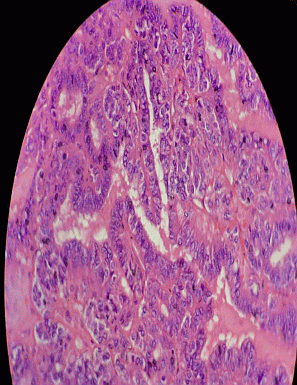ICEECE2012 Poster Presentations Clinical case reports - Thyroid/Others (81 abstracts)
Papillary thyroid-type carcinoma arising from struma ovarii: a case report
J. Barrera & F. Ang
University of the Philippines-Philippine General Hospital, Manila, Philippines.
Struma Ovarii and its malignant transformation to thyroid-type carcinoma are rare conditions. In recent reviews of reported literatures, only 53 cases of papillary thyroid-type carcinoma arising from struma ovarii were documented from 1924 to 2008. Due to the rarity of the disease, lack of uniform histological criteria for malignancy and protracted clinical course, its management is not also universally accepted by physicians. The aim of this paper is to present a very rare case of papillary thyroid-type carcinoma arising from struma ovarii, and review literatures on the suggested consensus for diagnosis and management of case.
A 41-year-old Filipino woman presented to our section after she underwent total abdominal hysterectomy with bilateral salphingectomy for suspected primary ovarian carcinoma. She has been complaining of vague abdominal pain and distention for almost a year. Her pre-operative CT scan of the abdomen revealed large cystic mass with calcification suggestive of ovarian teratoma. Intra-operatively, the left ovary was converted to an 11×8×3.5 cm multiloculated, multiseptated mass densely adherent to the bowels and uterus. On pathologic examination, the large ovarian mass proved to be a papillary thyroid-type carcinoma arising from a struma ovarii. She underwent platinum-based chemotherapy used for ovarian teratoma.
On review of available case reports and case series done on papillary thyroid-type carcinoma, surgical resection of the tumor has been shown as effective treatment modality. Total thyroidectomy to facilitate whole body scan, radioactive iodine ablation, and thyroxine suppression therapy have shown to significantly decrease tumor recurrence and mortality. Chemotherapy and radiotherapy did not show any benefits on clinical outcomes.
Our patient underwent total thyroidectomy, radioactive ablation therapy and levothyroxine suppression therapy after tumor resection.
Papillary thyroid-type carcinoma arising from stuma ovarii as presented in our case should, therefore, be diagnosed and managed as primary papillary carcinoma of thyroid gland.
Low power view showing papillary architecture with fibrovascular core and overlapping nuclei.

Declaration of interest: The authors declare that there is no conflict of interest that could be perceived as prejudicing the impartiality of the research project.
Funding: This research did not receive any specific grant from any funding agency in the public, commercial or not-for-profit sector.
 }
}



